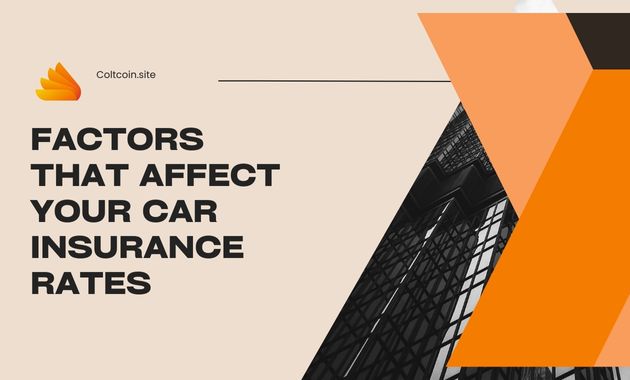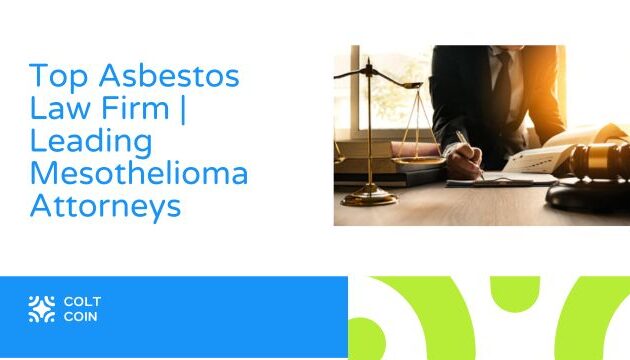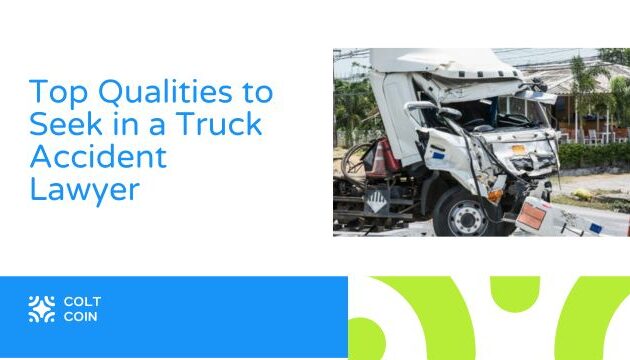What homeowners insurance covers and how to choose the best one – Yo, so you’re thinking about buying a house, right? That’s awesome! But before you get all hyped up about the new digs, there’s something crucial you need to know: homeowners insurance. It’s like the safety net for your biggest investment. This guide will break down what homeowners insurance covers, how to choose the right policy, and how to keep your premiums low.
Homeowners insurance protects you against financial losses from unexpected events like fires, theft, and natural disasters. It’s essential for peace of mind, knowing you’re covered if something bad happens. But with so many different policies out there, choosing the right one can be a bit overwhelming. We’ll help you navigate the process, making sure you’re protected without breaking the bank.
Understanding Homeowners Insurance Basics
Homeowners insurance is a type of property insurance that protects your home and belongings from unexpected events. It’s a crucial part of being a homeowner, providing financial protection against losses that could wipe out your savings. Think of it as a safety net that helps you rebuild your life after a disaster.
Common Perils Covered
A standard homeowners insurance policy covers a range of common perils, or risks, that could damage your home or belongings. These typically include:
- Fire
- Windstorm and hail
- Lightning
- Theft
- Vandalism
- Explosions
- Riots
- Civil commotion
- Falling objects
- Weight of snow, ice, or sleet
- Water damage (from plumbing, heating, or air conditioning systems)
It’s important to note that some perils, like earthquakes and floods, might require separate coverage.
Examples of Covered Situations
Here are some examples of situations where homeowners insurance would be applicable:
- A fire damages your kitchen, requiring repairs and replacement of appliances.
- A hailstorm damages your roof, necessitating roof replacement.
- A thief breaks into your home and steals valuable jewelry.
- A pipe bursts in your bathroom, causing water damage to the walls and flooring.
- A tree falls on your house during a storm, causing significant structural damage.
These are just a few examples of how homeowners insurance can provide financial protection in various situations.
Key Coverage Components
Homeowners insurance is like a safety net for your biggest investment – your house. It covers you against a variety of risks, but knowing what it covers and how much it covers is key. Think of it like building a personalized shield for your home.
A typical homeowners insurance policy breaks down into several key coverage sections, each addressing a specific aspect of your property and potential risks. These sections are designed to protect you from financial hardship in case of unforeseen events.
Dwelling Coverage, What homeowners insurance covers and how to choose the best one
This is the foundation of your homeowners insurance. It covers the physical structure of your house, including the attached structures like a garage or porch. Think of it as protection for the walls, roof, and everything in between.
Personal Property Coverage
This section covers your belongings inside your home, like furniture, electronics, clothing, and even your artwork. It’s the safety net for your personal stuff.
Liability Coverage
This is your protection against legal claims from others who might get hurt on your property or due to your actions. Think of it as a shield against lawsuits.
Additional Living Expenses
If your home becomes uninhabitable due to a covered event, this section covers the costs of temporary housing, meals, and other essential expenses. Think of it as a bridge while you rebuild.
Other Coverages
Besides the main sections, homeowners insurance policies often include additional coverages for specific situations. These can include things like:
- Loss of Use: Covers additional living expenses if your home is uninhabitable due to a covered event.
- Personal Injury: Protects you from claims related to injuries caused to others on your property.
- Medical Payments: Covers medical expenses for people injured on your property, regardless of fault.
- Tree and Shrub Coverage: Provides protection for trees and shrubs damaged by a covered event.
- Flood Insurance: A separate policy that covers damage from flooding, as most standard homeowners insurance policies exclude flood coverage.
Actual Cash Value vs. Replacement Cost Coverage
One crucial difference in homeowners insurance policies is the type of coverage you choose for your dwelling and personal property: Actual Cash Value (ACV) or Replacement Cost Coverage (RCV).
Yo, figuring out homeowner’s insurance can be a real drag, but it’s a must-have. You gotta know what it covers, like fire, theft, and stuff, and then find a plan that fits your budget. And while you’re at it, check out these Tips for saving money on car insurance , cuz you gotta keep your pockets lined.
Just like with car insurance, shopping around for homeowners insurance is key. Don’t just settle for the first thing you find. Get some quotes and see what’s up.
- Actual Cash Value (ACV): Pays for the replacement cost of your damaged property minus depreciation. This means you’ll receive less money than the actual cost to replace the item, as it considers how much the item has depreciated over time.
- Replacement Cost Coverage (RCV): Pays for the full cost of replacing your damaged property with a new item of similar kind and quality, without considering depreciation. This means you’ll receive enough money to replace the item with a brand new one, even if it’s older.
RCV is generally more expensive than ACV, but it offers better protection.
Deductibles and Premiums
Your deductible is the amount you’ll pay out-of-pocket before your insurance kicks in. A higher deductible generally means a lower premium, while a lower deductible means a higher premium. It’s about finding the right balance between your budget and your risk tolerance.
Yo, figuring out homeowners insurance can be a real head-scratcher, but it’s all about protecting your crib, right? You gotta know what’s covered, like fire damage or theft, and compare prices to find the best deal. And just like with your car, knowing the ins and outs of your coverage is key. Check out A complete guide to understanding car insurance to get a better grasp on that.
Then, you can bounce back to your homeowners insurance research and find the right plan for you.
| Deductible | Premium Impact |
|---|---|
| $500 | Higher premium |
| $1,000 | Lower premium |
| $2,500 | Significantly lower premium |
Factors Influencing Premium Costs: What Homeowners Insurance Covers And How To Choose The Best One
Your homeowners insurance premium is the amount you pay each month or year for coverage. Several factors determine how much you pay, and understanding these factors can help you find the best policy for your needs.
Location
Your home’s location significantly impacts your insurance premium. Insurance companies consider factors like:
- Natural disaster risk: Areas prone to earthquakes, hurricanes, floods, or wildfires will generally have higher premiums due to the increased risk of damage.
- Crime rates: Higher crime rates in your neighborhood can lead to increased premiums, as there is a greater chance of theft or vandalism.
- Fire department response times: Areas with slower fire department response times may have higher premiums because there’s a higher risk of extensive fire damage.
Home Value
The value of your home is a major factor in determining your premium. The more valuable your home, the more it will cost to rebuild or repair it, resulting in a higher premium.
Yo, homeowners insurance is like a safety net for your crib, covering stuff like fire, theft, and natural disasters. But choosing the right policy is key, so you gotta do your research and find one that fits your needs. Check out this guide on How to pick the best homeowners insurance for you to get the lowdown on comparing policies and getting the best coverage for your buck.
Once you’ve got a solid plan, you can chill knowing your home is protected, and that’s always a good vibe.
- Appraisals: Insurance companies may require a home appraisal to determine its value for insurance purposes.
- Replacement cost: Premiums are calculated based on the cost to rebuild your home using current materials and labor costs, not its original purchase price.
Coverage Limits
The amount of coverage you choose for your home and belongings directly impacts your premium.
- Higher coverage limits: Greater coverage limits mean higher premiums, as you are protected for more significant losses.
- Deductible: The deductible is the amount you pay out-of-pocket before your insurance kicks in. A higher deductible generally means a lower premium.
Risk Factors
Several risk factors can influence your premium, including:
- Age and condition of your home: Older homes with outdated electrical systems or plumbing may have higher premiums due to increased risk of damage.
- Roof type and condition: Roofs made of certain materials or in poor condition can increase premiums.
- Safety features: Homes with safety features like smoke detectors, fire sprinklers, or burglar alarms may qualify for lower premiums.
- Claims history: If you have filed numerous claims in the past, you may face higher premiums.
Deductibles
Your deductible is the amount you pay out-of-pocket before your insurance kicks in. Choosing a higher deductible can significantly reduce your premium.
- Lower premiums: Higher deductibles mean you pay more out-of-pocket in case of a claim, but your premium will be lower.
- Higher premiums: Lower deductibles mean you pay less out-of-pocket in case of a claim, but your premium will be higher.
Home Improvements and Safety Features
Making improvements to your home and installing safety features can sometimes lower your premium.
- Energy-efficient upgrades: Installing energy-efficient windows, doors, or insulation can reduce your energy costs and potentially lower your premium.
- Security systems: Installing a burglar alarm or security system can reduce your risk of theft and may qualify you for a discount.
- Smoke detectors and fire sprinklers: Having working smoke detectors and fire sprinklers can significantly reduce the risk of fire damage and may earn you a discount.
Choosing the Right Policy
Choosing the right homeowners insurance policy is crucial to ensure you’re adequately protected in case of unexpected events. It’s not just about finding the cheapest policy, but about finding one that meets your specific needs and budget.
Factors to Consider
It’s essential to assess your individual circumstances and needs before choosing a policy. Consider your personal risk tolerance and budget constraints.
- Risk Tolerance: How comfortable are you with the possibility of experiencing a loss? If you’re risk-averse, you might opt for higher coverage limits. Conversely, if you’re more comfortable with a lower level of coverage, you might choose a policy with a higher deductible.
- Budget Constraints: Homeowners insurance premiums vary widely based on factors like the location, age, and value of your home. Consider your budget and prioritize the coverage you need most.
Step-by-Step Guide to Choosing the Right Policy
Here’s a step-by-step guide to help you choose the best homeowners insurance policy for your needs:
- Assess Your Needs: Determine the coverage you require based on your home’s value, belongings, and potential risks.
- Research Insurance Companies: Compare different insurance companies, their coverage options, and their premiums. You can use online comparison tools or consult with an insurance agent.
- Get Quotes: Obtain quotes from multiple insurance companies to compare prices and coverage.
- Review Policy Details: Carefully read the policy documents to understand the coverage, exclusions, and limitations.
- Choose the Best Policy: Select the policy that offers the best combination of coverage, price, and customer service.
Comparing Insurance Companies
The following table compares coverage options and premium costs from different insurance companies:
| Insurance Company | Coverage Options | Premium Costs |
|---|---|---|
| 21st Century Insurance | Comprehensive coverage, high coverage limits | High premiums |
| Acuity Insurance | Basic coverage, lower coverage limits | Lower premiums |
| Allianz Life | Mid-range coverage, flexible options | Moderate premiums |
Additional Considerations
You’ve chosen a policy, but hold up! There are a few more things to think about before you sign on the dotted line. These additional considerations can make a big difference in how your insurance works for you.
Endorsements and Riders
Endorsements and riders are like add-ons to your basic homeowners insurance policy. They provide extra coverage for specific situations or belongings. Think of it like this: your basic policy is like a base model car. It gets you from point A to point B, but it doesn’t have all the bells and whistles. Endorsements and riders are like adding features, like a sunroof or a sound system.
Here’s the deal:
- Benefits: Endorsements and riders can give you peace of mind knowing that you’re covered for specific risks. They can also help you save money by only paying for the coverage you need.
- Drawbacks: Endorsements and riders can add to the cost of your policy. You’ll need to weigh the benefits of the extra coverage against the cost.
Some common endorsements and riders include:
- Flood Insurance: This protects your home from damage caused by flooding, which is not typically covered by standard homeowners insurance.
- Earthquake Insurance: This is important for homeowners in areas prone to earthquakes.
- Scheduled Personal Property: This provides additional coverage for valuable items like jewelry, art, or antiques. You’ll need to list these items and their value on the policy.
- Personal Liability Umbrella Policy: This provides extra liability coverage in case you’re sued for an accident that happens on your property.
Understanding Policy Exclusions and Limitations
You’re probably thinking, “Okay, so my policy covers everything, right?” Not so fast! All homeowners insurance policies have exclusions and limitations. These are things that the policy does not cover.Think of it like this: your insurance policy is like a contract. It spells out what you’re covered for and what you’re not. It’s super important to read your policy carefully to understand what’s covered and what’s not.
Some common exclusions include:
- Natural Disasters: Many policies exclude coverage for damage caused by certain natural disasters, such as earthquakes, floods, or landslides.
- Neglect or Intentional Acts: Your insurance won’t cover damage that you intentionally caused or that resulted from your neglect.
- Certain Types of Property: Policies may exclude coverage for certain types of property, such as animals, money, or valuable papers.
- Business Use: If you use your home for business purposes, your policy may exclude coverage for business-related losses.
Preventing Claims and Maintaining a Safe Home Environment
Here are some tips for preventing claims and keeping your home safe:
- Regular Maintenance: Keep your home in good condition by performing regular maintenance, such as checking your roof, gutters, and plumbing.
- Security Measures: Install security systems, such as alarms, locks, and motion detectors.
- Fire Safety: Have a fire extinguisher on hand and make sure everyone in your household knows how to use it.
- Water Safety: Be careful with water, especially when using appliances like washing machines and dishwashers.
- Be Aware of Your Surroundings: Pay attention to your surroundings and be aware of potential hazards.
Homeowners insurance is a must-have for anyone with a mortgage, but it’s also a smart investment for those who own their homes outright. It protects your biggest asset and gives you peace of mind knowing you’re covered in case of disaster. By understanding the basics of homeowners insurance and how to choose the right policy, you can safeguard your home and your finances.




